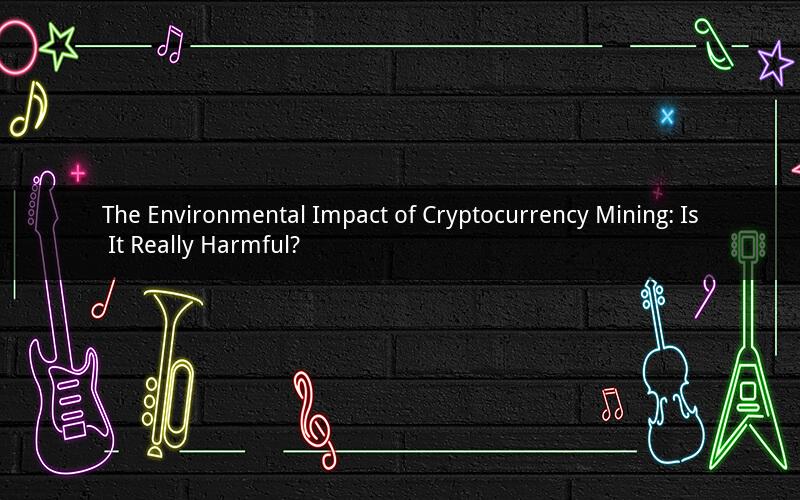
Introduction:
Cryptocurrency mining has become a pivotal aspect of the digital currency ecosystem. As the demand for digital currencies like Bitcoin and Ethereum continues to rise, so does the mining activity. However, concerns have been raised regarding the environmental impact of cryptocurrency mining. This article explores the negative effects of cryptocurrency mining on the environment and delves into the potential solutions to mitigate these issues.
1. The Energy Consumption:
One of the most significant environmental concerns surrounding cryptocurrency mining is its energy consumption. Mining requires a substantial amount of electricity to power the computers and equipment needed to solve complex mathematical problems. The energy consumption of cryptocurrency mining has raised concerns about its carbon footprint and contribution to global warming.
2. Greenhouse Gas Emissions:
The high energy consumption of cryptocurrency mining leads to significant greenhouse gas emissions. Most of the electricity used for mining comes from fossil fuels, such as coal, natural gas, and oil. These fossil fuels release carbon dioxide and other harmful gases into the atmosphere, contributing to climate change.
3. Electronic Waste:
Another environmental concern is the generation of electronic waste. Cryptocurrency mining involves the use of specialized hardware, which becomes outdated quickly. When these devices are no longer efficient, they are often discarded, leading to a significant amount of electronic waste. This waste can be harmful to the environment and pose health risks if not properly disposed of.
4. Water Usage:
In some regions, cryptocurrency mining relies on water-cooling systems to keep the equipment from overheating. This water usage can be problematic, particularly in areas facing water scarcity. The excessive extraction of water for mining purposes can harm ecosystems and disrupt local water supplies.
5. Land Use:
The mining industry requires physical space to house the equipment and infrastructure needed for mining operations. This can lead to deforestation and habitat destruction in some cases. Additionally, the construction of mining farms can disrupt local communities and ecosystems.
Potential Solutions:
While the environmental impact of cryptocurrency mining is a significant concern, there are potential solutions to mitigate these issues:
1. Renewable Energy Sources:
Transitioning to renewable energy sources is crucial in reducing the carbon footprint of cryptocurrency mining. Governments, organizations, and individuals can support the development and adoption of renewable energy infrastructure, such as solar, wind, and hydroelectric power.
2. Energy Efficiency:
Improving the energy efficiency of mining equipment can also reduce the overall energy consumption. Researchers and manufacturers are continuously working on developing more efficient mining hardware that consumes less electricity.
3. Electronic Waste Management:
Proper disposal and recycling of electronic waste are essential in minimizing the environmental impact of cryptocurrency mining. Implementing recycling programs and promoting responsible electronic waste management practices can help reduce the negative consequences of mining equipment disposal.
4. Water Conservation:
Efficient water usage and water recycling can help mitigate the water usage issues associated with cryptocurrency mining. Implementing advanced water-cooling technologies and promoting water conservation practices can reduce the strain on local water resources.
5. Sustainable Mining Practices:
Encouraging sustainable mining practices, such as responsible land use and minimizing the impact on local communities, can help reduce the environmental footprint of the mining industry.
FAQs:
1. What is the primary environmental concern associated with cryptocurrency mining?
The primary environmental concern is the high energy consumption and subsequent greenhouse gas emissions resulting from the use of fossil fuels for electricity.
2. Can cryptocurrency mining be conducted using renewable energy sources?
Yes, cryptocurrency mining can be conducted using renewable energy sources such as solar, wind, and hydroelectric power. Transitioning to these sources can significantly reduce the environmental impact of mining.
3. How can electronic waste from cryptocurrency mining be managed effectively?
Electronic waste from cryptocurrency mining can be managed effectively through proper disposal and recycling programs. Implementing recycling initiatives and promoting responsible electronic waste management practices can help minimize the environmental impact.
4. What are the potential solutions to address water usage issues in cryptocurrency mining?
Efficient water usage and water recycling can help address water usage issues. Implementing advanced water-cooling technologies and promoting water conservation practices can reduce the strain on local water resources.
5. How can the environmental impact of cryptocurrency mining be minimized on local communities?
The environmental impact of cryptocurrency mining can be minimized by promoting sustainable mining practices, such as responsible land use and minimizing disruption to local communities. Engaging with local stakeholders and implementing measures to mitigate the negative effects can help achieve a balance between mining operations and community well-being.